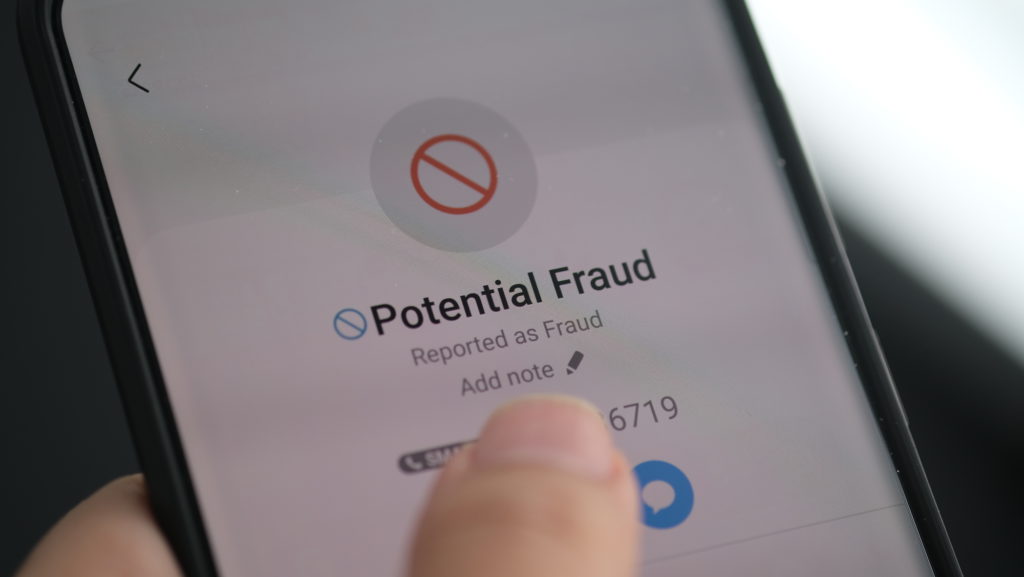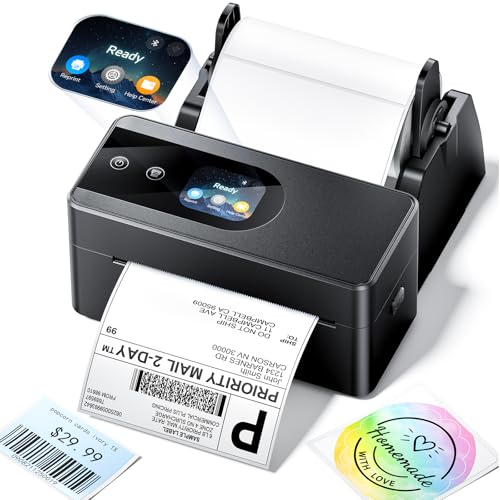Digital scams in 2025 look nothing like the obvious Nigerian Prince emails of decades past. Scammers now craft deceptions so convincing you’d think they earned MFAs in creative writing. You need to spot these frauds before they spot you.
Protecting your digital life isn’t optional anymore. This guide walks you through the most dangerous digital threats circulating today.
A homeowner almost lost $3,000 to a fake toll notification last week. “It looked completely real,” she told her neighbors, still shaken. “The area code matched our local highway authority and everything.” She called the actual toll agency before paying – a five-minute call that saved thousands.
10. PayPal Email Scam

Your PayPal account is much more likely to be targeted by email scammers than actually compromised by hackers. These messages copy PayPal’s design but contain harmful links or requests to install remote access software. Similarly, crypto and investment scams have surged in sophistication, leveraging fake endorsements and phishing schemes to trick victims
Watch for generic greetings instead of your actual name in these messages. Check email addresses carefully for slight misspellings like paypa1.com versus the legitimate paypal.com. Be suspicious of urgent demands for immediate action that pressure you to act without thinking. Reject any requests to install software, no matter how official they appear.
Check your PayPal activity by typing paypal.com directly in your browser. Never click email links claiming to be from PayPal. These scams spread faster than gossip in a small town – and cause way more damage.
PayPal will never ask you to download software through email. When that urgent security message appears, remember that legitimate services never request installations through email.
9. AI-Generated Scam Emails

When that unexpected sponsorship email from Nvidia lands in your inbox, AI technology might be the mastermind behind the scam. These often pose as sponsorship offers from companies like Nvidia, podcast invitations, or business proposals with attachments harboring malicious malware.
Be skeptical of too-good-to-be-true offers from major brands that arrive unexpectedly in your inbox. Question any suspicious attachments labeled as “contracts” or “agreements” that you weren’t expecting. Notice the pressure tactics urging you to download files immediately without proper verification. Pay attention to vague details about the supposed opportunity that lack specific information you can verify.
Verify any unexpected business offer through the company’s official website. The excitement of potential opportunities can cloud judgment, but a quick verification call protects your business from expensive mistakes.
8. “I Accidentally Reported You” Scam

Account suspension panic drives victims straight into scammers’ traps, but recognizing this widespread reporting scam can save your social media presence. Someone messages claiming they accidentally reported your account, directing you to a fake “admin” who demands payment.
Be alert to messages creating urgency about imminent account suspension designed to make you panic. Question any redirections to supposed “platform administrators” on third-party platforms. Reject immediately any request for payment to resolve account issues as legitimate platforms never charge for this. Be suspicious of communication that happens outside official platform support channels and systems.
No legitimate platform administrator will ever contact you through direct message or request payment. When that urgent message about your account appears, remember how quickly panic can turn into profit for these digital con artists.
7. Fake PR Manager Scams

If you’re excited about that unexpected message from a brand representative, pause before responding—fake PR manager scams target enthusiastic fans and influencers specifically. They build credibility by sharing legitimate company content, then target users with malicious links and requests for personal information.
Be suspicious of PR “managers” reaching out unprompted with amazing opportunities that found you “randomly.” Investigate accounts with limited history or suspicious follower counts that don’t match what you’d expect from legitimate brand representatives. Reject requests for sensitive information or suggestions to click on external links before verifying the source. Notice poor writing quality or strange phrasing that doesn’t match professional communications.
Before engaging, visit the company’s official website to verify PR contacts. If you’re building your brand or seeking partnerships, remember that legitimate opportunities rarely begin with unsolicited direct messages.
6. Windows Run Command Scam

The Windows Run command offers powerful system access for legitimate users, but scammers exploit this same feature to install malware with few keystrokes. They’re urged to paste and execute commands that download dangerous malware.
Be immediately suspicious of any website asking you to use Windows+R as this is rarely needed for legitimate purposes. Question lengthy code you’re asked to copy and paste into command windows, especially if you don’t understand what it does. Reject claims that running unknown commands will magically fix problems or improve performance. Be skeptical of urgent warnings about computer issues you weren’t previously aware of suddenly appearing in your browser.
Never execute commands from untrusted sources. The Windows Run dialog provides powerful system control for legitimate purposes, but keeping it closed to strangers preserves your digital security.
5. AI-Enhanced Fake Websites

Many people struggle to distinguish between AI-generated fake websites and their legitimate counterparts when quickly browsing online. These often mimic browser update pages or banking portals, but actually install “stealer” malware that captures your login credentials.
Always check URLs for slight misspellings or unusual domains that differ from official websites by just one or two characters. Be suspicious of any website prompting immediate downloads for “security reasons” without prior notification. Look for missing security indicators, like “HTTPS” in the URL or padlock symbols that should appear on legitimate secure sites. Notice poor design quality or inconsistent branding elements that don’t quite match the real website’s appearance.
Always check the website URL carefully before entering information. A single moment of URL verification is worth more than months of recovery from identity theft.
Companies have reported close calls with these fake sites. In one case, an entire office nearly installed updates from a site that looked identical to Google’s. The IT team caught the fraud just in time by noticing the URL was chrome-updates.com instead of google.com.
4. Shopify Fake Order Scam

That shocking expensive Shopify order confirmation in your inbox might be the opening move in an elaborate scam targeting both shoppers and merchants. Follow-up emails claiming to be from shipping companies request “verification” through Gmail addresses.
Question orders with nonsensical or AI-generated store names that don’t sound like real businesses. Be suspicious of extremely high-value orders you don’t remember placing, especially from stores you’ve never heard of. Watch for strange store names like “Help Center” that don’t match typical business naming patterns. Be skeptical of follow-up emails directing you to Gmail addresses for support instead of official company domains.
Verify all orders directly through your Shopify account or app. Order confusion creates the perfect opportunity for scammers, but direct verification through official channels eliminates their advantage.
3. App Authorization Scams

While convenient app permissions save time, they also create vulnerabilities that fake applications exploit to harvest your data and hijack your accounts. Telegram Phishing Scams work similarly when granted access, allowing scammers to post under your name, access sensitive data, or even steal digital assets like gaming items.
Question apps requesting permissions unrelated to their stated purpose, like a weather app wanting access to your contacts. Be suspicious of unfamiliar apps claiming to enhance popular services without official partnerships. Reject requests for authentication on suspicious websites instead of through official platforms. Be skeptical of promises offering free items or services through external login systems, especially in gaming communities.
Review all app permissions carefully before granting access. When that gaming app promises free items in exchange for login access, imagine handing your house keys to someone offering free furniture.
Gaming communities frequently share cautionary tales about these scams. One user lost everything when a “free skin generator” for Counter-Strike emptied their entire inventory.
2. Chrome Enhanced Protection

Chrome Enhanced Protection scans websites in real-time, automatically blocking sophisticated phishing attempts that standard security might miss. This offers significantly better protection than standard settings.
Open Chrome settings and go to “Privacy and Security” in the menu. Select “Enhanced protection” under the Safe Browsing options presented to you. Restart your browser to ensure the changes take effect properly. This simple process takes less than a minute but significantly improves your security.
This feature acts like a bouncer at an exclusive club – thoroughly checking everything before letting it near you. If you’re worried about keeping up with the latest threats, this protection automatically adapts to new scam techniques without your intervention.
1. Microsoft Edge Security Features

If you’re worried about falling for tech support scams, Microsoft Edge’s security features specifically target and neutralize these deceptive tactics. Edge offers built-in tools like “Enhance My Security on the Web” and scareware blockers designed to catch fake tech support scams.
Open Edge settings through the menu in the top right corner. Navigate to “Privacy, search, and services” from the options on the left side. Turn on Microsoft Defender SmartScreen to protect against phishing and malware. Enable “Enhance your security on the web” for maximum protection against current threats.
These features help detect and block sophisticated phishing attempts. Microsoft’s specialized scareware blockers prevent even the most convincing tech support scams from reaching your screen.
Staying safe online in 2025 requires vigilance and knowledge. When in doubt, go directly to official websites by typing the URL yourself. Never click suspicious links or download unexpected attachments.





























